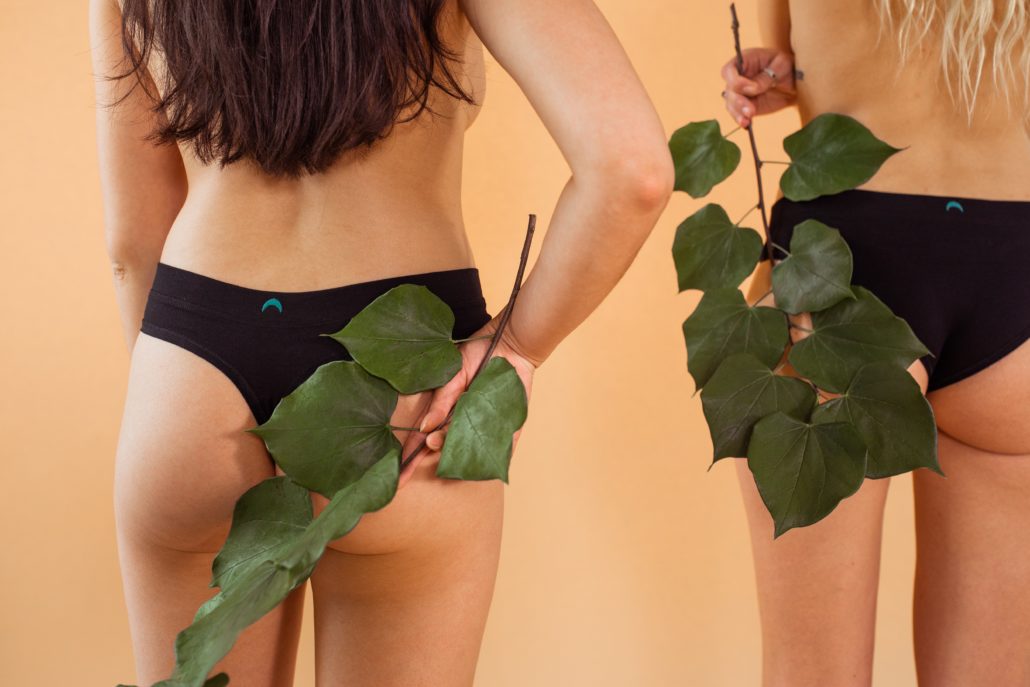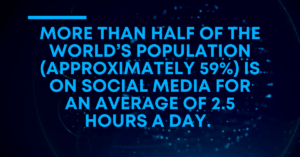Every year, Valentine’s Day is observed as a national holiday for people to share their love with the important people in their lives. From family and friends to significant others and self-love, Valentine’s Day is known to promote a variety of brands and products with the purpose of making someone feel happy. Because Valentine’s Day is a large event for intimacy brands and product lines, we decided to analyze three different lingerie brands to see which influencer marketing campaign gained the most traction leading up to the big day. Out of Adoreme, Victoria’s Secret and Savage x Fenty, who had the more successful Valentine’s Day influencer campaign?
The Breakdown: Brands and Strategy
In order to analyze the differences between each brand, we had to first create a baseline from which to measure the success of each campaign. These parameters included posts on social media using hashtag “#lingerie,” and the percentages of that hashtag that were used by micro-influencers, mega-influencers and macro-influencers. After identifying the total number of influencers promoting the #lingerie hashtag, we were able to isolate the influencers that used special hashtags associated with each brand, like “#savagexfenty” or “#victoriassecret”. Then by isolating the number of active influencers in each subgenre of influencer, we were also able to identify the demographics that were best being served by each brand’s influencer campaigns. This allowed us to determine the size, type and number of influencers that each brand were targeting, and see whether or not their strategies were paying off.
While micro-influencers have smaller, more loyal followings, mega-influencer and macro-influencers can offer a much larger reach and follower count than otherwise possible. Every influencer is different and provides different advantages for brand campaigns–brands simply must find the right fit for their values and message. Identifying how each brand used their influencer campaigns helps us understand their target demographic, and the strategies they utilized in their Valentine’s Day promotions. After gathering data from Sideqik, here are our findings:
TOTAL PEOPLE TALKING ABOUT LINGERIE:
- Out of 44,246 people talking about lingerie leading up to Valentine’s Day, 87.48% were micro-influencers, 9.28% were macro-influencers, and 3.24% were mega-influencers.
- Out of 14,316 posts talking about lingerie leading up to Valentine’s Day, 69.59% were from Instagram, 12.39% were from Twitter, 8.59% were from Facebook, and the remaining 9.43% were from YouTube, Tumblr, blogs and Pinterest.
ADOREME:
- Out of the 163 people talking about Adoreme lingerie leading up to Valentine’s Day, 68.71% were micro-influencers, 23.93% were macro-influencers, and 7.36% were mega-influencers. Out of all people talking about lingerie leading up to Valentine’s Day, .37% included Adoreme hashtags and posts.
- Out of the 177 posts talking about Adoreme lingerie leading up to Valentine’s Day, 63.28% were on Instagram, and 33.33% were on Twitter. Almost 2/3 of Adoreme’s posts were on Instagram. Out of all total posts talking about lingerie leading up to Valentine’s Day, 1.24% were Adoreme posts.
- Out of the 896,391 engagements on posts talking about Adoreme lingerie leading up to Valentine’s Day, 96.57% of engagements were on Instagram while 3.38% were on Facebook. Twitter only had .06% of the total engagements, and the one Tumblr post got zero engagements. Almost 100% of Adoreme engagements were on Instagram.
- Adoreme was the only lingerie brand out of the three to include hashtags like “#ad” and “#myvdaytruth”, both of which indicate sponsored campaigns.
- January 27th had the most posts (10), followed by February 12th (8) and a tie with February 14th (6), January 30th (6) and January 16th (6).
- January 17th received the most amount of engagements (98,993) despite only having 3 posts on that day. January 14th followed with (85,729) and February 12th with (78,392). February 12th was the only day that had a large amount of posts and also received a large amount of engagements.
VICTORIA’S SECRET:
- Out of the 10,611 people talking about Victoria’s Secret lingerie leading up to Valentine’s Day, 86.23% were micro-influencers, 9.69% were macro-influencers, and 4.08% were mega-influencers. Out of all people talking about lingerie leading up to Valentine’s Day, 23.98% were Victoria’s Secret posts.
- Out of the 6,166 posts talking about Victoria’s Secret lingerie leading up to Valentine’s Day, 62.54% were on Instagram, 15.65% were on Twitter, 14.27% were on Facebook, 4.70% were on YouTube, and 2.84% were on Pinterest, blogs and Tumblr. Out of all total posts talking about lingerie leading up to Valentine’s Day, 43.07% were Victoria’s Secret posts.
- Out of all the total engagement on posts talking about Victoria’s Secret lingerie leading up to Valentine’s Day, 88.07% of engagements were on Instagram while 6.80% were on YouTube and 5.13% were on Facebook, Twitter, Tumblr and Pinterest.
- Despite having 83 posts on blogs, they only gathered a sum of 10 total engagements. Tumblr only had 28 posts, but each post averaged about 4,174.64 engagements–more than any other network. Each YouTube post averaged about 1,996.17 engagements, while each Instagram post averaged about 1,945.19 engagements per post. This means that Tumblr was the most successful method of promotion for Victoria’s Secret, followed by YouTube.
- Victoria’s Secret also had more engagements on YouTube posts than on Twitter posts, even though there were more Twitter posts than YouTube posts. Victoria’s Secret had roughly 9x more engagements than Adoreme.
- Victoria’s Secret hashtags reflect the cancellation of the Fashion Show, which could provide an inaccurate reading of the number of people talking about the lingerie leading up to Valentine’s Day.
- January 20th had the most amount of posts (164) but received the sixth most amount of engagements (317,253). January 29th only had 86 posts, but garnered an impressive 1,049,815 engagements.
SAVAGE X FENTY:
- Out of the 341 people talking about Savage x Fenty lingerie leading up to Valentine’s Day, 24.05% were micro-influencers, 45.16% were macro-influencers, and 30.79% were mega-influencers. Out of all people talking about lingerie leading up to Valentine’s Day, .77% were Savage x Fenty posts.
- Out of the 7,011 posts talking about Savage x Fenty lingerie leading up to Valentine’s Day, 28.24% were on Instagram and an impressive 68.68% were on Twitter, while 3.08% were on Facebook, YouTube, Tumblr, blogs and Pinterest. Out of all total posts talking about lingerie leading up to Valentine’s Day, 48.97% were Savage x Fenty posts.
- Out of the 175,936,045 total engagement on posts talking about Savage x Fenty lingerie leading up to Valentine’s Day, 19.85% of engagements were on Instagram while an impressive 79.76% were on Twitter and .40% were on Facebook, Tumblr, YouTube, blogs and Pinterest. Savage x Fenty had 3x more engagements than Victoria’s Secret, and 31x more engagement than Adoreme.
- Pinterest only had two posts, and each post garnered an average of one engagement. Alternatively, Twitter had an average of 29,141.96 engagements per post–making it the most successful network for interacting with the Savage x Fenty community. Twitter also had the most amount of posts, directly correlating with the amount of engagement it received. There were 13 posts on blogs, which only received a total of 5 engagements–making it an unsuccessful avenue for engaging with the Savage x Fenty community.
- Savage x Fenty hashtags do not show any sponsorship or advertisements, meaning that the engagements and interactions could be entirely organic.
- The two days with the highlight number of posts (January 31 and January 12) were also the days with the first highest and second highest number of engagements.
Key Takeaways:
Different networks reach different audiences, some of which might be your target audience.
This is best seen in the way that Adoreme, Victoria’s Secret and Savage x Fenty audiences engage with their content across all networks. Influencers talked about the Adoreme brand on Tumblr and Twitter, but neither of those platforms responded well and therefore the brand received close to no engagement from those audiences. This is most evident on Twitter. Despite having 59 Adoreme posts on the network, they only accumulated 510 total engagements–roughly 8.64 engagements per post. In contrast, Savage x Fenty saw an average of 29,141.96 engagements per post, making Twitter their most successful network for engaging with their audience.
This trend continues into other networks for the lingerie brands, with a surprising emphasis on Tumblr for reaching audiences. There were only 28 posts about Victoria’s Secret on Tumblr, but each of the posts got an average of 4,174.64 engagements–beating out YouTube, Instagram and Facebook for most engagements per post. Although Tumblr was not successful for the Savage x Fenty or Adoreme campaigns, Victoria’s Secret tapped into an audience that aligned with its message–resulting in a more powerful outcome of engagement from their users.
Digital media is moving at a rapid pace, resulting in a variety of networks each with individualized audiences that have different interests. For brands looking to get the most out of their influencer campaigns, they should diversify the networks that they advertise to–leading to more engagements across unsuspecting platforms.
Currently, there are more ways to collect influencer data across more networks than ever. By analyzing the data from Victoria’s Secret, Adoreme and Savage x Fenty, you can clearly see how each platform offered different results for each brand depending on their values, message and audience. For brands looking to make their influencer campaigns the most successful, you must also consider expanding into new networks to best utilize all your resources.
Product differentiation can lead to more brand awareness and recognition.
Although all of these brands focus on lingerie, the Victoria’s Secret and Savage x Fenty brands also have lines dedicated to other types of products and services. By differentiating their brand into other areas, they are able to gain more brand recognition and awareness through their other ventures as well as their lingerie lines. For example, Victoria’s Secret had the Victoria’s Secret Fashion Show (and all the buzz surrounding its recent cancellation) which played into the number of hashtags used and the way that consumers were talking about VS lingerie. In a similar sense, Savage x Fenty has a line of clothing and represents the musician, entrepreneur and more Rihanna, all of which increase the brand recognition and awareness as well.
For these reasons, the engagements, hashtags and other metrics from our lingerie test include information from more than just influencers sponsored by the brand. There are lots of people organically talking about Savage x Fenty and VS, and it shows in the lack of “#ad” or “#sponsored” hashtags. On the other hand, Adoreme launched a digital campaign right before Valentine’s Day to promote their lingerie, and the corresponding hashtags appeared most frequently–#ad and #sponsored.
This shows the importance of brand awareness and how powerful word-of-mouth marketing can become. With influencers, more people trust influencers than their own friends, and that reflects in the purchasing power of those consumers. If a trusted influencer recommends a product or service, consumers are more likely to listen to that influencer and get interested in the product, or even purchase the product to try themselves. This reflects in the metrics we gathered from the lingerie campaign and the massive success of Savage x Fenty over Victoria’s Secret and Adoreme.
Finding the right size of influencer for your brand can make or break your campaign.
While Adoreme and Victoria’s Secret focused primarily on micro-influencers, Savage x Fenty went after macro- and mega-influencers to showcase their products. This could explain the large number of engagements from Savage x Fenty posts compared to the other brands. Larger influencers have a larger reach, and in turn can share a message with a much larger audience than smaller influencers can. However, smaller influencers are more likely to have dedicated fan bases that trust their influencers like friends, resulting in more conversions from audience to buyer.
The Adoreme campaign leading up to Valentine’s Day featured people wearing lingerie in everyday situations, doing common activities. United under the common theme of “My V-Day Truth”, Adoreme targeted people that were relatable and by doing so encouraged the message that anyone could wear their lingerie in any situation. By using micro-influencers, Adoreme kept true to their values and campaign ethos. Because micro-influencers have smaller followings, they are more relatable to their audiences and often have intimate relationships with most of their followers. Adoreme wanted to access everyday people that like wearing lingerie and micro-influencers were the right pick to further spread that message.
This could also reflect in the number of influencers talking about their lingerie across social media. Although they have much less engagement, posts and influencers than VS or Savage x Fenty, Adoreme could have lots of other people talking about their brand that are not specifically identified as influencers. This is an example of how brands and advertisers need to redefine what is considered an influencer–to include anyone talking about or interacting with your brand. By including everyone as parts of a larger narrative, brands like Adoreme are furthering their campaign in new, innovative ways through smaller, closer-knit markets.
Maria Lewczyk
Latest posts by Maria Lewczyk (see all)
- 4 Ways Esports Can Use Influencers to Reach a Broader Audience - March 26, 2020
- How Brands Can Use Influencers and TikTok for Commercial Campaigns - March 20, 2020
- 3 Things Marketers Can Learn from Bumble’s Influencer Partnerships - March 10, 2020







